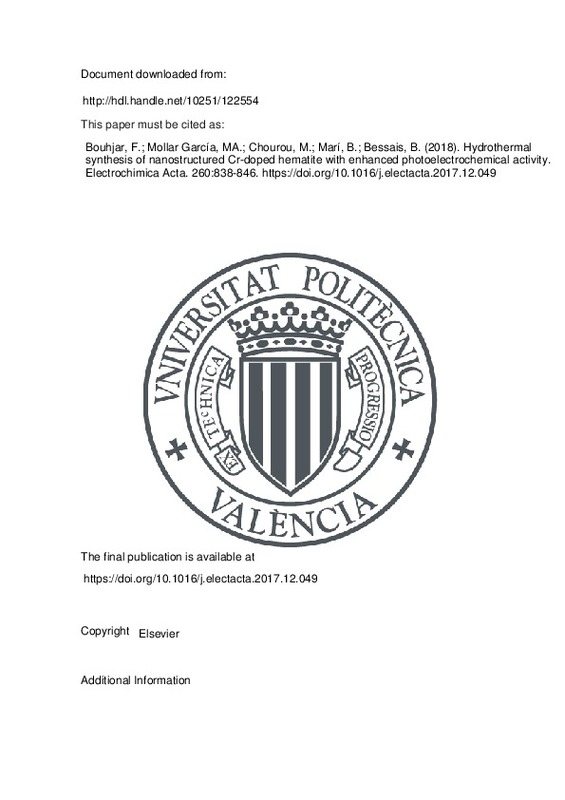JavaScript is disabled for your browser. Some features of this site may not work without it.
Buscar en RiuNet
Listar
Mi cuenta
Estadísticas
Ayuda RiuNet
Admin. UPV
Hydrothermal synthesis of nanostructured Cr-doped hematite with enhanced photoelectrochemical activity
Mostrar el registro completo del ítem
Bouhjar, F.; Mollar García, MA.; Chourou, M.; Marí, B.; Bessais, B. (2018). Hydrothermal synthesis of nanostructured Cr-doped hematite with enhanced photoelectrochemical activity. Electrochimica Acta. 260:838-846. https://doi.org/10.1016/j.electacta.2017.12.049
Por favor, use este identificador para citar o enlazar este ítem: http://hdl.handle.net/10251/122554
Ficheros en el ítem
Metadatos del ítem
| Título: | Hydrothermal synthesis of nanostructured Cr-doped hematite with enhanced photoelectrochemical activity | |
| Autor: | Bouhjar, Feriel Chourou, M.L. Bessais, Brahim | |
| Entidad UPV: |
|
|
| Fecha difusión: |
|
|
| Resumen: |
[EN] Using the easily applicable hydrothermal method Cr-doped hematite thin films have been deposited polycrystalline on conductive glass substrates. The hydrothermal bath consisted of an aqueous solution containing a ...[+]
|
|
| Palabras clave: |
|
|
| Derechos de uso: | Reconocimiento - No comercial - Sin obra derivada (by-nc-nd) | |
| Fuente: |
|
|
| DOI: |
|
|
| Editorial: |
|
|
| Versión del editor: | https://doi.org/10.1016/j.electacta.2017.12.049 | |
| Código del Proyecto: |
|
|
| Agradecimientos: |
|
|
| Tipo: |
|







![[Cerrado]](/themes/UPV/images/candado.png)


